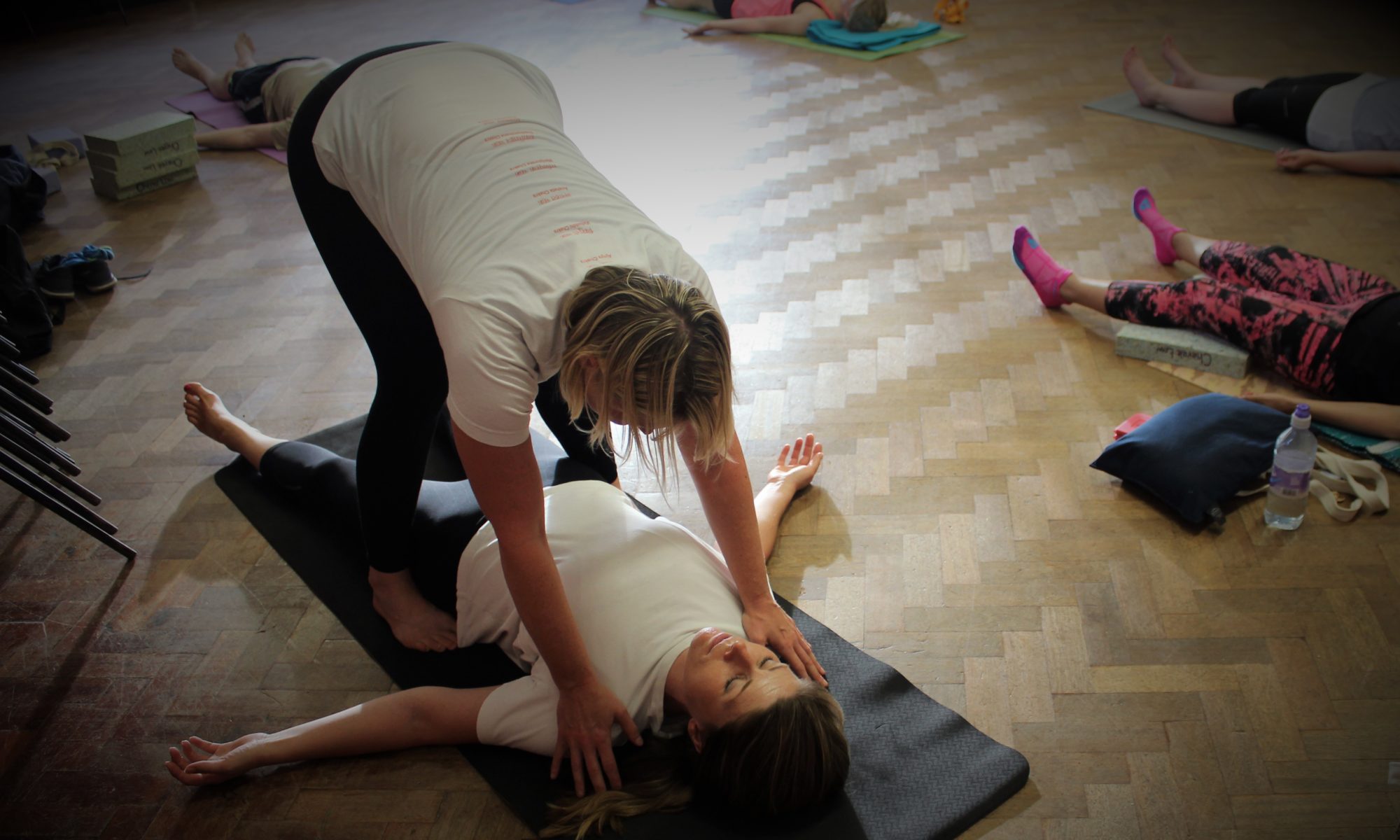This weekend, I attended a yoga day with Sallie Sullivan and I really enjoyed her teaching. She taught in a way that inspired more reflection rather than just giving instruction. She encouraged us to explore the connections between poses and the connection between the actions of a pose and the breath.
She had us do the following sequence 3 times:
- Utthita Parsvakonasana (hand in front) directly to Utthita Trikonasana (hand behind)
- Virabhadrasana II directly to Utthita Trikonasana
- Virabhadrasana I directly to Utthita Trikonasana
The first time, she didn’t offer much guidance other than to observe the connections and how each preceding pose changed our experience of Utthita Trikonasana. The second time, she gave some clues about what we might have noticed (perhaps the extension of the trunk, the movement of the tailbone, or the awareness of the back leg), and the third time she had us see how each of the preceding poses affected the breath in Utthita Trikonasana. Each time through, I felt as if my mind was able to move more inward and be more reflective.



